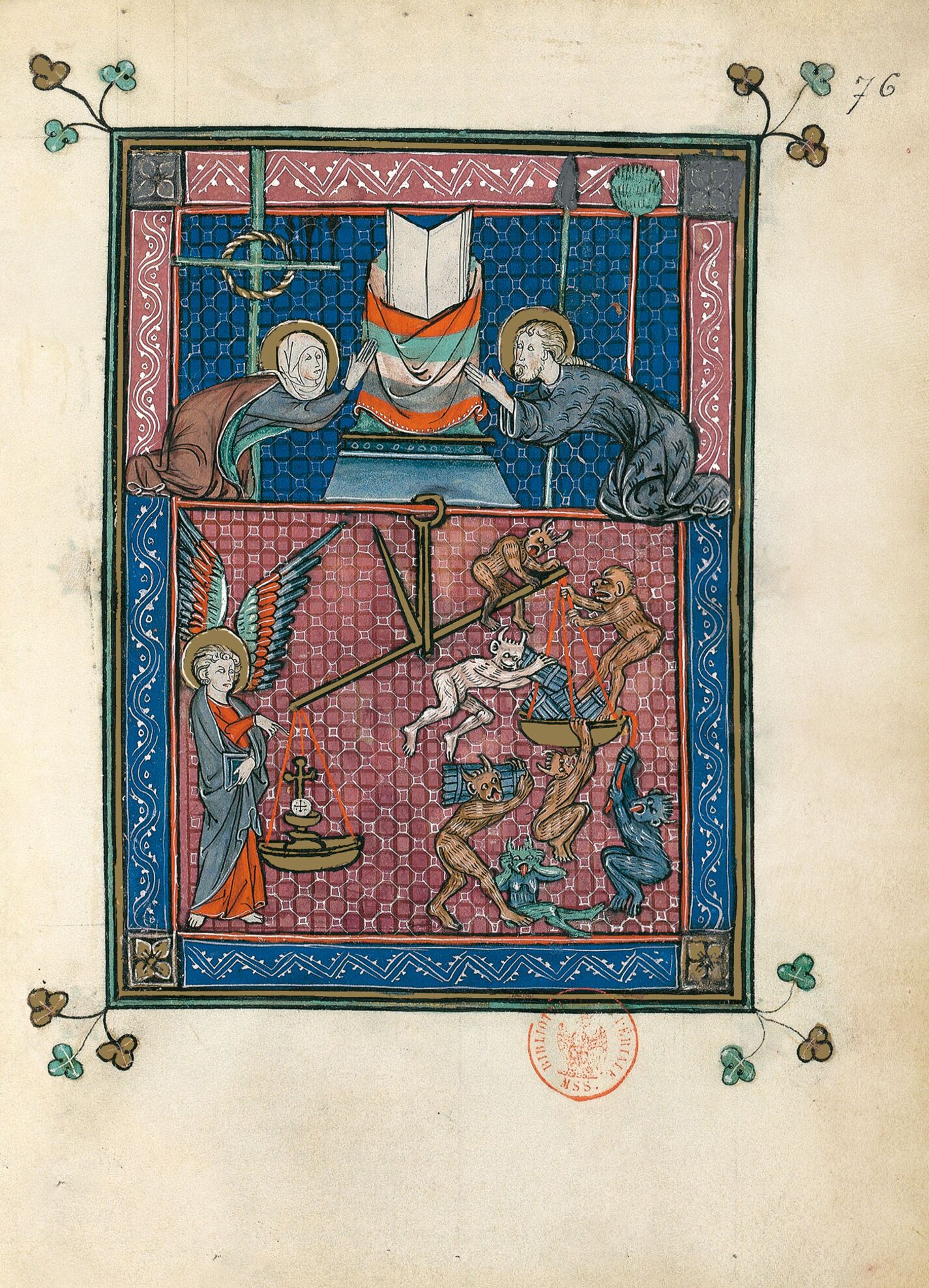The book of Life, in which the names of the chosen ones are written, lies open whilst the deceased are being judged. Rather than a literal portrayal of the resurrection of the dead before the destruction of death and Hades, cast into the pool of fire shortly afterwards, the designer of the iconographic programme preferred a conceptual, programmatic image centring the reader’s attention on the messianic dimension of St John’s vision. As a result, the instruments of Christ’s passion in the upper register – the cross with the crown of thorns, the spear and the sponge – recall the Lord’s glory more sharply than his triumphant effigy. Mary and John the Baptist, the Precursor, wearing the same hide tunic as at the baptism of Christ scene (f. 14v), fall down in worship not at the feet of the Crucified Christ but before the book enthroned on an imposing seat covered in an altar cloth. They are both portrayed here in their role as intercessors for humanity. This figuration of the throne of Justice stemming from the oriental empty throne (Etimasia) magnifies the mystery of the Parousia (the second Coming of Christ) whilst increasing the faithful’s fear of the heavenly judgement.
One may suppose that John has written a great deal. He turns round for a moment to look at his quill whilst keeping his left elbow on his parchment scroll to prevent it from sliding away.
Marie-Thérèse Gousset and Marianne Besseyre
Illuminated Manuscripts Research Center, Bibliothèque nationale de France
Fragment of the Apocalypse of 1313 commentary volume

The book of Life, in which the names of the chosen ones are written, lies open whilst the deceased are being judged. Rather than a literal portrayal of the resurrection of the dead before the destruction of death and Hades, cast into the pool of fire shortly afterwards, the designer of the iconographic programme preferred a conceptual, programmatic image centring the reader’s attention on the messianic dimension of St John’s vision. As a result, the instruments of Christ’s passion in the upper register – the cross with the crown of thorns, the spear and the sponge – recall the Lord’s glory more sharply than his triumphant effigy. Mary and John the Baptist, the Precursor, wearing the same hide tunic as at the baptism of Christ scene (f. 14v), fall down in worship not at the feet of the Crucified Christ but before the book enthroned on an imposing seat covered in an altar cloth. They are both portrayed here in their role as intercessors for humanity. This figuration of the throne of Justice stemming from the oriental empty throne (Etimasia) magnifies the mystery of the Parousia (the second Coming of Christ) whilst increasing the faithful’s fear of the heavenly judgement.
One may suppose that John has written a great deal. He turns round for a moment to look at his quill whilst keeping his left elbow on his parchment scroll to prevent it from sliding away.
Marie-Thérèse Gousset and Marianne Besseyre
Illuminated Manuscripts Research Center, Bibliothèque nationale de France
Fragment of the Apocalypse of 1313 commentary volume